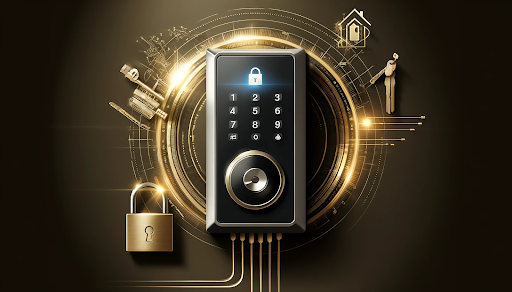In the realm of property management and security, the importance of effective key control and management cannot be overstated. For property managers, chief security officers, and security company hiring managers, the task of safeguarding assets, tenants, and employees is paramount. Ensuring that unauthorized access is prevented while maintaining seamless access for those who require it is a balancing act that requires meticulous planning and execution. This blog post delves into the crux of implementing an effective key management system that enhances security without compromising on convenience.
The Importance of Key Management
Imagine a scenario where keys are misplaced or fall into the wrong hands. The consequences can range from minor inconveniences to significant security breaches. Effective key management is not just about having a good locking system in place; it's about controlling who has access to these keys and when. It's about ensuring that only authorized personnel can access sensitive areas, thereby safeguarding both physical and intellectual property.
Steps to Implement an Effective Key Management System
1. Assessing Your Current Key Management Practices
Start by taking stock of your current key management practices. How are keys issued, tracked, and returned? Are there protocols in place for when keys are lost, or personnel leave the organization? Understanding your current practices is the first step toward identifying potential vulnerabilities.
2. Defining Access Levels
Only some people need access to all areas. By defining access levels, you can ensure that individuals only have access to areas pertinent to their roles. This minimizes the risk of unauthorized access to sensitive areas.
3. Investing in the Right Technology
In today's digital age, mechanical keys are no longer the only option. Electronic key management systems offer enhanced security features, such as access logs, the ability to revoke access easily, and even remote management capabilities. Investing in technology can significantly enhance your key management system's effectiveness.
4. Regular Audits and Updates
Security is not a one-time task but a continuous process. Regular audits of your key management system can help identify breaches or weaknesses. Additionally, keeping your system updated to leverage the latest security features is crucial.
5. Training and Awareness
One of the most critical aspects of effective key management is ensuring that all personnel are aware of the protocols and understand the importance of key security. Regular training sessions instill the significance of security and ensure everyone is on the same page.
Frequently Asked Questions
What are the benefits of electronic key management systems?
-
Electronic systems offer enhanced security features, easier management of access levels, and detailed access logs, making it simpler to track who accessed which areas and when.
How often should key management systems be audited?
-
It depends on the size and complexity of your operations, but generally, conducting an audit at least once a year is recommended. More frequent audits may be necessary for high-security areas.
What should be done if a key is lost or stolen?
-
Immediate action should be taken to either deactivate the key (in the case of electronic systems) or change the locks for mechanical key systems. It's also crucial to investigate how the key was lost or stolen to prevent future incidents.
Can key management systems be integrated with other security systems?
-
Yes, many electronic key management systems can be integrated with other security systems, providing a comprehensive security solution. This can include integration with CCTV, alarms, and access control systems.
.png)
.png)
.png)

.png)
.png)

.png)
.png)
.png)
.png)
